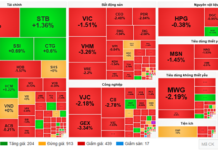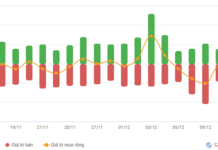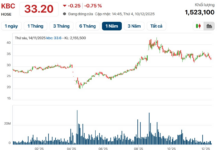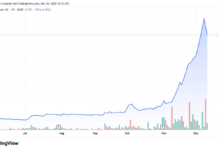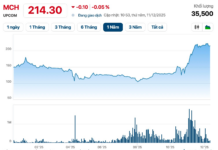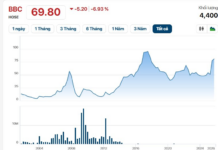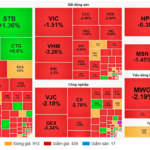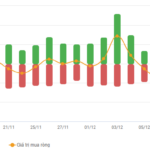The industrial production situation in the first seven months of 2024 looked promising, according to the Ministry of Industry and Trade’s report at the regular Government press conference in July, held on August 5. Deputy Minister Phan Thi Thang highlighted several positive indicators, showing strong growth across the board.
Specifically, the manufacturing PMI for July 2024 reached 54.7 points, increasing for the fourth consecutive month and hitting its highest level since November 2018. The growth rate of industrial production volume in July was higher than that of June, reaching its peak since March 2011. The index of industrial production (IIP) for the first seven months rose by 8.5% year-on-year, the highest cumulative level since February 2024. Notably, the processing and manufacturing industry expanded by 9.5%.

It’s worth noting that in July, industrial production grew broadly in 60 out of 63 provinces and cities, especially in localities with a pivotal role in industrial development. Only three localities recorded a decline. Some provinces with impressive growth rates include Khanh Hoa, Bac Giang, Hai Phong, and Quang Ninh.
The high consumption index in the processing and manufacturing industry led to a decrease in inventory levels compared to the previous year. Several key industrial products witnessed significant increases compared to the same period last year, including steel bars and angles, fabrics made from natural fibers, rolled steel, NPK compound fertilizers, and electricity production.
These growth figures in the industry as a whole and the processing and manufacturing sector, in particular, paint a very positive picture of the country’s production landscape.
“It’s evident that industrial production is experiencing a robust recovery compared to 2023 and is on a trajectory of continued positive growth,” asserted Deputy Minister Phan Thi Thang. “The processing and manufacturing industry has regained its role as the driver of economic growth.”
The production capacity of domestic industrial enterprises has rebounded remarkably, and they are well-positioned to seize opportunities to access new markets in the coming months. “The confidence of domestic manufacturing enterprises and foreign investors has been strongly bolstered by the positive signals in industrial production growth in the first few months of 2024,” noted Deputy Minister Phan Thi Thang.
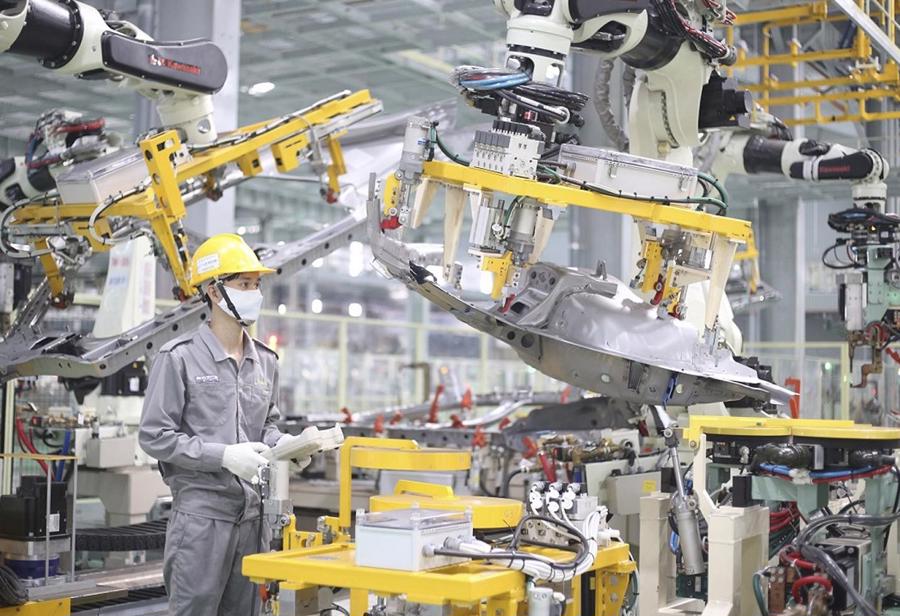
According to Deputy Minister Phan Thi Thang, five main factors contributed to these achievements:
First, the effectiveness of government support measures and the Prime Minister’s decisive directives in disbursing public investment capital and implementing key industrial projects.
Second, the favorable results in attracting and disbursing FDI have enhanced the capacity of domestic production.
Third, the government, ministries, sectors, and localities have worked closely with associations and enterprises to capitalize on opportunities arising from free trade agreements (FTAs) that Vietnam has signed, amidst the global market recovery. Export orders have grown positively, including in key export sectors such as textiles, footwear, electronics, and food processing.
Fourth, remarkable achievements in economic diplomacy, especially with Vietnam’s major trading partners like the United States and China, have helped reinforce investor and business confidence.
Fifth, the capabilities of enterprises, particularly domestic ones, have improved due to the comprehensive impact of government support policies (a positive signal is the near-doubling of export growth by domestic enterprises compared to FDI enterprises) and the stable macroeconomic environment, coupled with the global market’s recovery trend.
Regarding future challenges, Deputy Minister Phan Thi Thang identified four main obstacles that the economy and industrial production will likely face:
First, despite significant improvements, the internal strength of domestic industries remains weak. Long-standing bottlenecks in industry have not been effectively addressed. Production is still heavily reliant on external factors, especially the FDI sector. The added value of domestic industries is low, and the supporting industry is underdeveloped. There are not many domestically produced industrial products with high-tech content.
Second, the recovery of industrial production is not yet comprehensive. In the first seven months of 2024, three out of 63 localities saw a decrease in IIP. Some key manufacturing sectors declined compared to the same period, such as smartphones, televisions, automobiles, crude iron and steel, and draft beer. Although there has been a positive recovery, some key export items (footwear, wood, phones, and components) have not returned to their peak levels of 2022.
Additionally, the last few months of the year and the following years may present challenges due to volatile domestic and international contexts.
Third, the world and regional situations continue to evolve rapidly, complexly, and unpredictably. Geopolitical tensions and great power competition are intensifying, and the recovery of major trading partners remains slow. There are risks of disruptions in global supply and production chains. Import and export activities are still dependent on specific markets, products, and the FDI sector. Some key exports to major markets (EU and the US) continue to face pressures from trade remedy investigations and technical barriers.
Fourth, domestically, the real estate market is recovering slowly. The domestic market is growing slower than in the previous year. Domestic price indices are under upward pressure following the implementation of new policies.
Given these circumstances, the Ministry of Industry and Trade believes that comprehensive, long-term, and robust solutions are necessary to ensure stable and sustainable growth for industries.
Moving forward, the Ministry of Industry and Trade will implement four groups of solutions to further boost industrial production:
Firstly, continue to proactively implement support policies for enterprises approved by the Government. This involves removing obstacles in production and business operations, especially for key export sectors such as textiles, footwear, and fundamental industries like automobiles, machinery, and steel. It also includes facilitating the operation of new industrial production projects to serve exports and domestic consumption, thereby enhancing production capacity and expanding the export supply base.
Secondly, focus on advising and completing the institutional, policy, and legal framework, as well as developing strategies for some fundamental industries. This will lay the foundation for new growth drivers in the short and long term.
Thirdly, continue to effectively implement existing programs with localities and support enterprises, aiming to restore and boost industrial growth in key economic regions and localities.
Fourthly, assist enterprises in seizing opportunities arising from large public investment projects and the government’s real estate market recovery policies. Encourage the preference for domestically produced goods and minimize the use of imported products and raw materials that can be sourced domestically. Promote the search for new markets for key export sectors such as textiles, footwear, and electronics.
Three Economic Growth Scenarios for Ho Chi Minh City in Q1 2024
At the socio-economic meeting reviewing the results of January and setting the goals for February 2024, held this morning (1/2), the Ho Chi Minh City Institute for Research and Development has presented three economic growth scenarios for the first quarter of Ho Chi Minh City.

